Iliad, Ofcom, RCS-e
Let’s get straight onto this week’s main events in European wireless – a new operator in France, Ofcom adjusting its LTE spectrum auction conditions, and signs of life for the delayed RCS-e launch in Spain. The first two have been fairly widely covered, of course.
Iliad/Free will tell us again that it is possible to come into a market and disrupt with low prices. Look to Yoigo in Spain, where Telia Sonera is gaining some kind of karmic revenge on the MVNOs (and Hutchison) for wreaking such havoc on its own margins in Scandinavia years ago. This time around, in Spain, T-S is the hunter, and not the hunted. It attacked a similar, tri-partite T1 status quo that exists in France.
Of course, the classic T1 response to the incomer is that by fixing on price, they will only sweep up the sorts of customers that the T1s don’t want in any case. Or, alternatively, the T1’s already have an MVNO or subsidiary brand targeted at that market. The difference in France is that the big three have not seen the possibility of such disruption before, and that the disruptor is a serious looking beast. Although the French market is innovative in services, its three operators have had the game to themselves. The spectrum auction has given the competition authorities a chance to introduce a new player to the game and with this player backed not by a finger-in-the-air “invest as we grow” management team, but by one of your actual billionaires, that new player to the game has a real chance to make something of themselves. Free stands a chance of breaking the “no more new entrants” rule that Bengt Nordstrom, of Northstream, outlined to Mobile Europe last year as an inevitable result of revenue-led auctions.
Not much chance of that in the UK market, where Ofcom is mainly concerned with making sure that when it does get around to auctioning of spectrum, it isn’t immediately dragged into the courts by the unhappy “losing” parties.
Its previous proposal to assure Everything Everywhere some spectrum at the 800Mz digital dividend spectrum was withdrawn. This “sub 1GHz” spectrum is seemingly the most prized as it offers the widest coverage (and best building penetration) profile. With Vodafone and O2 already sitting on stacks of 900MHz spectrum, EE with only 1800MHz spectrum, and Three having no 900MHz or 1800MHz spectrum at all, Three and EE were both keen to make sure that when the new spectrum came around, they damn well got some. Yet following some fierce lobbying, Ofcom announced that it is now minded to remove EE’s guarantee of the 800MHz spectrum. It could be that Ofcom has bought the growing industry view that 1800MHz spectrum is actually quite tidy for LTE. It offers decent coverage, with decent capacity, sitting as it does right between 800Mhz (good coverage, poor for capacity) and 2.6GHz (good for capacity, poor for coverage) spectrum – the other block of spectrum up for grabs for LTE.
EE responded by quickly asking if Ofcom would allow it to refarm its spectrum for 4G use. If it can clear enough space at 1800MHz, therefore, EE wouldn’t even need to sit and wait for an auction, with an implied threat that it could even afford to bid less vigorously in the eventual auction – harming the revenue goals of a cash strapped government, but increasing the chances that the other “big two” walk off with a lot more spectrum for less money. In the long term, EE can’t really allow this to happen, as spectrum is spectrum and the most crucial asset out there. It’s not a game of chess exactly. More like a game of bridge, where bidders try to fix the contract to their advantage, depending on the hand they’ve been dealt. At the moment, EE has bid a couple of no trumps. There will be few passes. Who will be dummy, though?
Finally, some signs of movement on RCS-e, the interesting/ promising/ doomed/ irrelevant (delete as appropriate) specification for interoperable IP goodness such as group messaging, IM, file transfer and “other stuff”. A Vodafone Spain press release yesterday stated that three main Spanish operators had agreed to launch RCS-e services on selected handsets within the first half of this year. It’s still possible that the operators will make a Mobile World Congress deadline, where an announcement could be given most fanfare, but even that would represent slippage from the promise, given at MWC in 2011, of the launch of RCS-e in at least one market before the end of 2011.
Does it matter that RCS-e is a little late? Are such things probably only of interest to industry nerds? Yes, and no. RCS-e is the template for operators to fight back against the OTT threat, from apps such as Whatsapp to the Google and Apple-led services. It offers interoperability, cross platform support, and in time all this done natively within devices. If it is late, and remember RCS-e is already the trimmed down version of the original proposal, then that is a few more months for the other players to keep growing, another 1-2 years’ phone releases without native support. The other aspect is that RCS-e proponents say it is not just about messaging, it will act as an enabler of other services. The implication being that without it these as yet unseen “other services” don’t happen either. If progress is not seen, the other likelihood is that operators conclude this stuff is too hard, and find other ways to make cross-platform approaches work for themselves. That would be waste of a lot of work, for one thing, but also be another knock to the “interoperability is our strength” message the industry loves to rely on.
What was the last big service success for this telco “interoperability”? SMS? Or you could claim, after a few false starts, MMS? It sounds a strange rallying cry, but telcos need another chalk tick in the column marked “interoperability”. Let’s see if RCS-e can deliver that.
Last weeks news this week:
A week ago, your faithful correspondent trotted off with a shiny new 2012 notebook to hear Mike Flanagan, CTO of network optimisation company Arieso, speak about “hungry handsets”. Arieso had conducted a bit of research into a real, live Tier One European operator’s device profile.
Since then, I have mostly been in bed improvising on a flu profile, having strange hallucinations that included Mobile World Congress being held in my kitchen extension (I don’t have a kitchen extension), and wondering why someone had replaced my medical records with my MWC press accreditation applications (Refused).
So then, apologies for the almost total lack of action on Mobile Europe in that period. Illness and staff holidays have done for us.
Anyway, as only about 450 other sites covered the Arieso news you will no doubt have seen it, but just in case let’s remind ourselves of the main thrust of Arieso’s findings (“last week’s news this week”, that’s the Mobile Europe motto).
Arieso found, in its data mining of this European operator, that users of the iPhone 4S demand three times the data that iPhone 3G users do. Users of the Nexus 1 generate twice the number of data calls on the network compared to iPhone 3G users. The top 1% of users generate 50% of the data demand on the network. The top 0.1% generates 20% of all data demand. Of that top 1%, two thirds are dongle or data modem users, and a third are smartphone users.
This was mainly reported faithfully along these terms. But what, I asked, through clear eyes that betrayed few signs of the incubating infection within, are operators supposed to do with this information? Is a device that generates more data a good thing (higher usage indicates a happier customer and drives data revenues) or a bad thing (increased cost of supporting more traffic)? If 1% of users are generating 50% of the data do you, Mr Operator, view that as a problem (“bandwidth hogs”) or an opportunity to charge the heavy users an appropriate amount, and then look to turn the other 99% into heavy users too, so you can charge them? If most of those “extreme” users are sitting one a laptop dongle, therefore easy enough to work out where they are, isn’t that a nice enough problem to have?
The answers to these questions will depend operator by operator, taking pricing strategies, network utilisation and capacity constraints over the air and in backhaul into account. Flanagan’s view was that with the operator in question, it wants to see users hitting the appropriate usage profiles per device, as that would suggest they are happy users. Someone with an iPhone 4S who is hardly using it may sound profitable, but actually that low usage just as likely to indicate someone who may have a problem, and is thinking of churning.
(Nice analogy here, from Flanagan, that mobile operators cannot operate on the New Year gym membership principle – where a gym signs up dozens of new users in the almost sure knowledge it won’t be seeing them lifting any weights in the near future. With the customer acquisition costs operators support, they can’t afford to kiss off future revenues in that way.)
But Flanagan said that the data did prove one overall trend – that data consumption will indeed increase in line with the more bullish predictions. The logic is that as more and more users get devices that either actually are iPhone 4S or are akin to the 4S, then that increased usage profile will be more widely spread. Result = more data. Roughly three times the data, say, of a typical iPhone 3G, or similar device, user.
Flanagan said that in his opinion it is the automatic cloud-based sync of many the 4S’ services that is driving that increased data on the downlink. As other OS and devices catch up, we will see even more services such as Siri, or auto-syncing content services, driving data usage, he said.
So do device vendors also have a duty to make their devices more sympathetic to network conditions – syncing at quieter times, or in preferable locations? Probably. Does knowing that one device tends to generate n times more data than another device really help? A little, but operators really ought to know this stuff already. Does knowing that 1% of your users are responsible for so much traffic help? A little bit more, especially as you also know that most of them are using mobile broadband more as a fixed wireless access technology for home broadband than as a truly mobile technology. Does flu make you dream weird things? Oh yes.
Keith Dyer
Editor
Mobile Europe


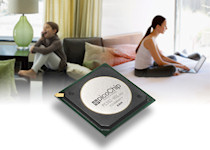
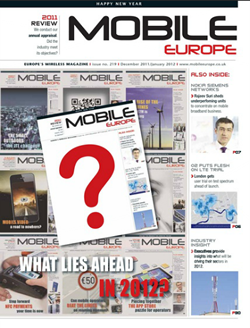
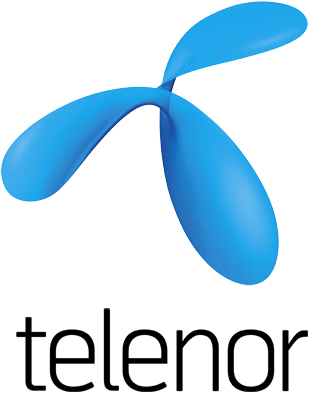
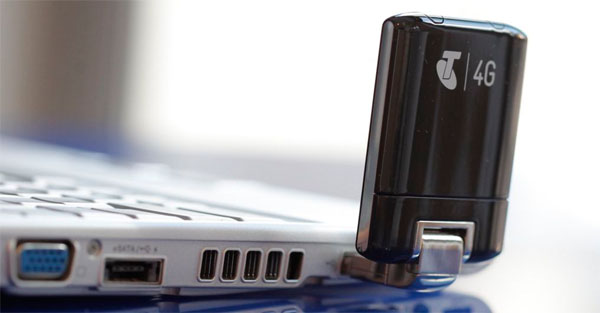
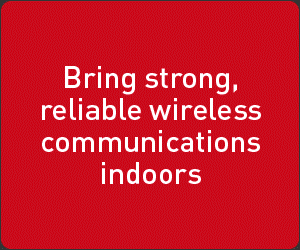
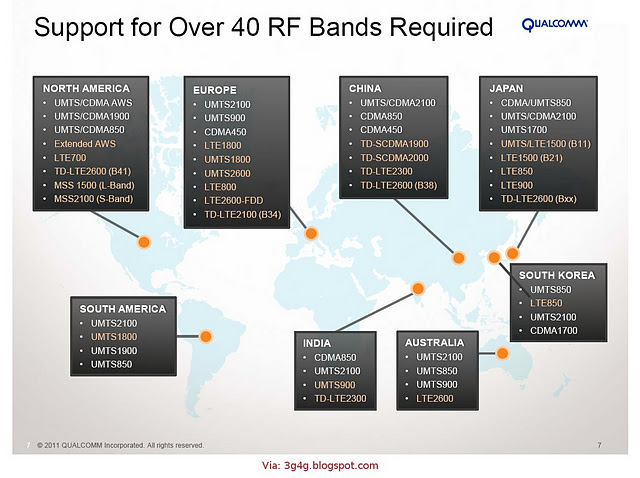

What use is interoperability?
Iliad, Ofcom, RCS-e
Let’s get straight onto this week’s main events in European wireless – a new operator in France, Ofcom adjusting its LTE spectrum auction conditions, and signs of life for the delayed RCS-e launch in Spain. The first two have been fairly widely covered, of course.
Iliad/Free will tell us again that it is possible to come into a market and disrupt with low prices. Look to Yoigo in Spain, where Telia Sonera is gaining some kind of karmic revenge on the MVNOs (and Hutchison) for wreaking such havoc on its own margins in Scandinavia years ago. This time around, in Spain, T-S is the hunter, and not the hunted. It attacked a similar, tri-partite T1 status quo that exists in France.
Of course, the classic T1 response to the incomer is that by fixing on price, they will only sweep up the sorts of customers that the T1s don’t want in any case. Or, alternatively, the T1’s already have an MVNO or subsidiary brand targeted at that market. The difference in France is that the big three have not seen the possibility of such disruption before, and that the disruptor is a serious looking beast. Although the French market is innovative in services, its three operators have had the game to themselves. The spectrum auction has given the competition authorities a chance to introduce a new player to the game and with this player backed not by a finger-in-the-air “invest as we grow” management team, but by one of your actual billionaires, that new player to the game has a real chance to make something of themselves. Free stands a chance of breaking the “no more new entrants” rule that Bengt Nordstrom, of Northstream, outlined to Mobile Europe last year as an inevitable result of revenue-led auctions.
Not much chance of that in the UK market, where Ofcom is mainly concerned with making sure that when it does get around to auctioning of spectrum, it isn’t immediately dragged into the courts by the unhappy “losing” parties.
Its previous proposal to assure Everything Everywhere some spectrum at the 800Mz digital dividend spectrum was withdrawn. This “sub 1GHz” spectrum is seemingly the most prized as it offers the widest coverage (and best building penetration) profile. With Vodafone and O2 already sitting on stacks of 900MHz spectrum, EE with only 1800MHz spectrum, and Three having no 900MHz or 1800MHz spectrum at all, Three and EE were both keen to make sure that when the new spectrum came around, they damn well got some. Yet following some fierce lobbying, Ofcom announced that it is now minded to remove EE’s guarantee of the 800MHz spectrum. It could be that Ofcom has bought the growing industry view that 1800MHz spectrum is actually quite tidy for LTE. It offers decent coverage, with decent capacity, sitting as it does right between 800Mhz (good coverage, poor for capacity) and 2.6GHz (good for capacity, poor for coverage) spectrum – the other block of spectrum up for grabs for LTE.
EE responded by quickly asking if Ofcom would allow it to refarm its spectrum for 4G use. If it can clear enough space at 1800MHz, therefore, EE wouldn’t even need to sit and wait for an auction, with an implied threat that it could even afford to bid less vigorously in the eventual auction – harming the revenue goals of a cash strapped government, but increasing the chances that the other “big two” walk off with a lot more spectrum for less money. In the long term, EE can’t really allow this to happen, as spectrum is spectrum and the most crucial asset out there. It’s not a game of chess exactly. More like a game of bridge, where bidders try to fix the contract to their advantage, depending on the hand they’ve been dealt. At the moment, EE has bid a couple of no trumps. There will be few passes. Who will be dummy, though?
Finally, some signs of movement on RCS-e, the interesting/ promising/ doomed/ irrelevant (delete as appropriate) specification for interoperable IP goodness such as group messaging, IM, file transfer and “other stuff”. A Vodafone Spain press release yesterday stated that three main Spanish operators had agreed to launch RCS-e services on selected handsets within the first half of this year. It’s still possible that the operators will make a Mobile World Congress deadline, where an announcement could be given most fanfare, but even that would represent slippage from the promise, given at MWC in 2011, of the launch of RCS-e in at least one market before the end of 2011.
Does it matter that RCS-e is a little late? Are such things probably only of interest to industry nerds? Yes, and no. RCS-e is the template for operators to fight back against the OTT threat, from apps such as Whatsapp to the Google and Apple-led services. It offers interoperability, cross platform support, and in time all this done natively within devices. If it is late, and remember RCS-e is already the trimmed down version of the original proposal, then that is a few more months for the other players to keep growing, another 1-2 years’ phone releases without native support. The other aspect is that RCS-e proponents say it is not just about messaging, it will act as an enabler of other services. The implication being that without it these as yet unseen “other services” don’t happen either. If progress is not seen, the other likelihood is that operators conclude this stuff is too hard, and find other ways to make cross-platform approaches work for themselves. That would be waste of a lot of work, for one thing, but also be another knock to the “interoperability is our strength” message the industry loves to rely on.
What was the last big service success for this telco “interoperability”? SMS? Or you could claim, after a few false starts, MMS? It sounds a strange rallying cry, but telcos need another chalk tick in the column marked “interoperability”. Let’s see if RCS-e can deliver that.
Last weeks news this week:
A week ago, your faithful correspondent trotted off with a shiny new 2012 notebook to hear Mike Flanagan, CTO of network optimisation company Arieso, speak about “hungry handsets”. Arieso had conducted a bit of research into a real, live Tier One European operator’s device profile.
Since then, I have mostly been in bed improvising on a flu profile, having strange hallucinations that included Mobile World Congress being held in my kitchen extension (I don’t have a kitchen extension), and wondering why someone had replaced my medical records with my MWC press accreditation applications (Refused).
So then, apologies for the almost total lack of action on Mobile Europe in that period. Illness and staff holidays have done for us.
Anyway, as only about 450 other sites covered the Arieso news you will no doubt have seen it, but just in case let’s remind ourselves of the main thrust of Arieso’s findings (“last week’s news this week”, that’s the Mobile Europe motto).
Arieso found, in its data mining of this European operator, that users of the iPhone 4S demand three times the data that iPhone 3G users do. Users of the Nexus 1 generate twice the number of data calls on the network compared to iPhone 3G users. The top 1% of users generate 50% of the data demand on the network. The top 0.1% generates 20% of all data demand. Of that top 1%, two thirds are dongle or data modem users, and a third are smartphone users.
This was mainly reported faithfully along these terms. But what, I asked, through clear eyes that betrayed few signs of the incubating infection within, are operators supposed to do with this information? Is a device that generates more data a good thing (higher usage indicates a happier customer and drives data revenues) or a bad thing (increased cost of supporting more traffic)? If 1% of users are generating 50% of the data do you, Mr Operator, view that as a problem (“bandwidth hogs”) or an opportunity to charge the heavy users an appropriate amount, and then look to turn the other 99% into heavy users too, so you can charge them? If most of those “extreme” users are sitting one a laptop dongle, therefore easy enough to work out where they are, isn’t that a nice enough problem to have?
The answers to these questions will depend operator by operator, taking pricing strategies, network utilisation and capacity constraints over the air and in backhaul into account. Flanagan’s view was that with the operator in question, it wants to see users hitting the appropriate usage profiles per device, as that would suggest they are happy users. Someone with an iPhone 4S who is hardly using it may sound profitable, but actually that low usage just as likely to indicate someone who may have a problem, and is thinking of churning.
(Nice analogy here, from Flanagan, that mobile operators cannot operate on the New Year gym membership principle – where a gym signs up dozens of new users in the almost sure knowledge it won’t be seeing them lifting any weights in the near future. With the customer acquisition costs operators support, they can’t afford to kiss off future revenues in that way.)
But Flanagan said that the data did prove one overall trend – that data consumption will indeed increase in line with the more bullish predictions. The logic is that as more and more users get devices that either actually are iPhone 4S or are akin to the 4S, then that increased usage profile will be more widely spread. Result = more data. Roughly three times the data, say, of a typical iPhone 3G, or similar device, user.
Flanagan said that in his opinion it is the automatic cloud-based sync of many the 4S’ services that is driving that increased data on the downlink. As other OS and devices catch up, we will see even more services such as Siri, or auto-syncing content services, driving data usage, he said.
So do device vendors also have a duty to make their devices more sympathetic to network conditions – syncing at quieter times, or in preferable locations? Probably. Does knowing that one device tends to generate n times more data than another device really help? A little, but operators really ought to know this stuff already. Does knowing that 1% of your users are responsible for so much traffic help? A little bit more, especially as you also know that most of them are using mobile broadband more as a fixed wireless access technology for home broadband than as a truly mobile technology. Does flu make you dream weird things? Oh yes.
Keith Dyer
Editor
Mobile Europe